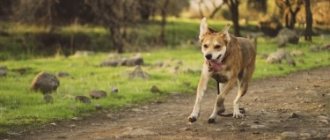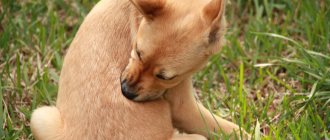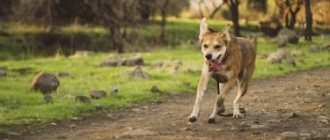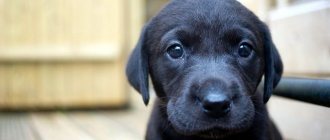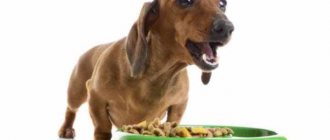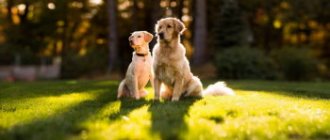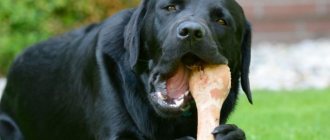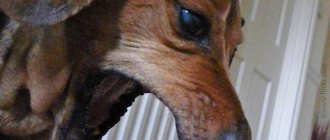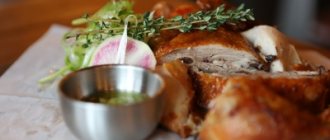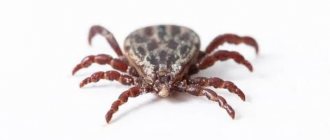Many dog owners sooner or later face the problem of a cracked or torn nail. This is very serious, because it means severe pain and discomfort for the pet. In addition, the wound may bleed.
If a person encounters such an incident for the first time, he may panic and provide incorrect assistance, which can subsequently lead to infection or improper growth of the claws .
Therefore, it is recommended that you familiarize yourself with the rules of first aid in advance, and also get a veterinary first aid kit if you don’t already have one.
Why is this happening?
A dog may catch its claw on carpet, upholstery, or protruding plant roots. She can also jump unsuccessfully, and the impact will cause her claw to bend and break. It is even easier to get damaged if the dog is already old. In this case, the claws become dry, brittle and brittle. The chance of injury is even higher if the animal's claws are long. These people are more likely to get caught and get injured.
Should I go to the doctor?
As already mentioned, if your dog's nail is cracked or completely broken, a trip to the veterinarian is a must. This is especially true for situations where the injury occurred in close proximity to the animal’s paw.
The doctor will be able to assess the extent of the damage, treat the wound with antiseptic substances and give painkillers if necessary. In addition, it will be possible to remove the damaged part of the nail. Using special instruments, the doctor can remove half of the claw without damaging the upper part and, accordingly, preventing delamination.
You definitely need to take your dog to the vet.
First aid
In the vet. The first aid kit must contain disinfectants (for example, hydrogen peroxide, iodine, brilliant green), hemostatic agents (a styptic pencil or regular baby powder; also, if they are unavailable, you can use flour) and painkillers (ibuprofen, naprocfen, aspirin).
For cracked claws
- rinse the wound with clean water;
- treat with peroxide;
- stop the bleeding.
There is nothing more you can do on your own, so after providing first aid, take your dog to the veterinarian !
ATTENTION : do not neglect a visit to the veterinarian, this can result in serious consequences - from infectious infection to amputation of the phalanx on which the claw is cracked!
If it breaks in half or a piece falls off
- rinse your paw with purified water - this is necessary to prevent dirt from getting into the wound, because it is important to prevent the development of pus;
- treat the wound with hydrogen peroxide ;
- further treat with brilliant green ;
- if there is blood after she breaks it, stop the bleeding using a bandage, gauze or towel as a pressure bandage;
- remove the part of the claw that has been damaged; it may interfere with the pet, cause discomfort or even pain;
- apply a swab with levomekol ointment and bandage the paw.
It is recommended to contact a veterinary clinic.
If you tore it out at the root
- wash the wound;
- treat with peroxide;
- stop the bleeding;
- tie a bandage on your paw to prevent infection;
- contact a veterinary clinic.
For any of these injuries, after first aid it is necessary to apply antibiotic ointment or powder to the root of the claw and bandage it with a bandage. Change such dressings about three times a day for a week or two.
If the dog has torn off the bandage and is constantly trying to lick the wound, then there are two options. The first is to put on a special cone for your pet, which does not allow the tongue to reach the wound. The second is to fasten the bandage around the neck, and put a thick sock on the paw, bandaging it with an elastic bandage.
ATTENTION ! When you give first aid to a dog that has damaged its nails, it is unlikely to sit still. Usually the pet breaks out, runs away, and sometimes even tries to bite the owner. No matter how kind a dog is, its behavior in times of severe pain can be unpredictable.
Be prepared for this course of events; during any procedure, especially one that causes discomfort and pain, hold your pet in a tight hug . This way he won’t be able to escape and, most importantly, he will feel safe.
Check out this video on how to stop a dog's nail from bleeding:
What dangers do such injuries pose?
The animal's limb is constantly in motion. In addition, pets lean on their fingers when standing. Therefore, a front paw injury can significantly affect freedom of movement and even the musculoskeletal system in general. Possible complications:
- Development of severe bleeding when the dog breaks a nail at the root.
- With poor-quality treatments, infection and inflammation may develop.
- Osteomyelitis is a process that will lead to complete loss of a finger.
- Fracture or crack of the phalanx of the finger.
- Gait disturbance, which may lead to further acquired deviations in the structure of the limb.
How to avoid problems?
Caring for them should be a mandatory procedure. Trim your nails regularly to reduce the risk of breaking or breaking your nails. To do this, choose a nail clipper that suits your dog at the pet store.
The structure of a dog's claw is much more complex than that of many other animals and, even more so, than the structure of a human nail. Without going into details, you can divide it into the claw bed or, in other words, the pulp (inner layer) and the keratin sheath, which is located on the outside.
When cutting, it is very important not to touch the pulp, but to cut exactly the outer layer, parallel to the floor, so that the dog can walk comfortably.
If your pet's claws have no color , then it will be easy for you to determine the boundary of the layers, and therefore to carry out a quality trim. You can see the pulp by laying the dog on its back and looking at the inside of the paw.
If they are painted , then this border may not be visible, which complicates the process. Remember that only the keratinized tip of the claw should be cut off, being careful not to touch the soft tissue.
IMPORTANT ! If you do touch the pulp, treat the wound immediately. It is easy to notice the damage - the claw will begin to bleed, and the pet will struggle due to the pain caused.
You will have to practice for some time before the procedure begins to be carried out by you properly and is perceived calmly by the animal. Of course, if you are afraid of the sight of blood ( being inexperienced, you can touch the capillaries ), you are afraid of harming your pet by doing something wrong, then it would be best to contact a specialist.
Haircut frequency
It depends on the animal's lifestyle. If your dog constantly walks on hard surfaces, such as asphalt or paving stones, then the claws on his paws wear down on their own. All that remains is to ensure that there are always a few millimeters between them and the floor . If you have a dog that rarely walks on such surfaces, then the procedure should be carried out more often. The same can be said about the winter periods.
If proper and high-quality care for the claws is not provided, they can cause pain in the joints, because the claws interfere with the correct positioning of the paw , resulting in chronic diseases of the joints, injuries to the fingers and the claws themselves.
Remember that correcting these consequences will be hundreds of times more difficult than preventing them!
In addition to all of the above, it is imperative to take control of the dog’s nutrition. To strengthen the dog’s claws, as well as bones, fur and general condition, it is necessary to give it raw meat, bones, milk, and cottage cheese.
Instead of cottage cheese, it is not recommended to give glazed cheese curds , as many dog breeders do. You can replace fresh cottage cheese with hard cheeses or feta cheese. Be sure to include vitamins in her diet. Even with a completely balanced diet, you may still lack some vitamins.
IMPORTANT ! In the cases listed below, do not delay treatment and contact a veterinary clinic!
- The animal cannot step on its paw for more than an hour.
- Can't stop the bleeding.
- During processing, unpleasant discharge appears.
- If the dog whines a lot, it does not allow the wound to be treated.
- If the case is so serious that, obviously, surgery cannot be avoided.
Prevention of claw injuries
Well-groomed, healthy, normal-length nails and structures are less susceptible to known risks.
Trim your dog's nails on time and keep an eye on it. Normal walks 50/50 field/asphalt twice a day self-regulate this problem. The claws are ground down to the optimal physiological norm.
For healthy and proper development of the claw, use only high-quality food. Don't overfeed your dog. For natural foods, feed beef, beef by-products, fish, vegetables, fish oil, calcium, brewer's yeast. When using industrial feed, choose trusted brands, beware of counterfeit products. Do not violate the instructions for use by enhancing your diet with various additives!
Recently, developed cities have begun to use a special reagent for snow! It is very dangerous for both the paws and claws of animals. It has very caustic properties! Protect your pet, wash your paws after a walk, pay attention to dog shoes!
Dewclaws
The dewclaw (fifth finger) is not functional.
Located on the paw above the foot. If such a toe on the front paw is damaged, it is treated, trimmed, and stitches are applied like all other toes with claws. On the hind paw, such a toe should be removed as a vestige.
The breeds Briard, Turkish Kangal, Nenets Laika (reindeer Spitz), Beauceron have a fifth toe as a distinctive feature of the breed! It is treated, it is prohibited to remove it!
Methodology
The method of performing the operation depends on the goals set. In any case, declawing surgery is a complex and painstaking process that requires:
- Compliance with septic and antiseptic rules.
- The doctor's experience.
- Availability of equipment, preferably a special cautery, which cauterizes the vessels during dissection.
- Preliminary examination of the dog for heart, kidney and liver diseases. At a minimum, a general blood test is taken and an examination is carried out.
- Full anesthesia, since the procedure is very painful, requires precision from the surgeon and immobility from the patient.
A dog that picks a nail will not necessarily lose it completely. The doctor’s task is to stop the bleeding, cauterize all the vessels, and preserve the claw and finger as much as possible. If everything goes well, the tailed one will need rehabilitation and care, but a new claw will then grow. The recovery process is quite long, but after the wounds heal, the dog does not experience much discomfort.
In other cases, when it comes to saving a limb or the life of an animal, the claw is removed forever. If the damage affects the finger, it will also be amputated. It is unwise to hesitate and take risks in such situations, since the remaining infection may rise higher and then we will talk about amputation of a hand or limb.
Adviсe
After a walk, it was discovered that the dog was licking its paw or limping. You need to carefully examine the paw and the pads on it. If part of the claw is missing and the wound is bleeding, then the damage is quite serious and requires treatment.
It happens that it is not possible to get an appointment with a veterinarian. In this case, you need to treat and heal the wound yourself. The fact is that there is a blood vessel in the claw, and the longer the claw, the larger this vessel is in it. Without treatment of a torn claw, necrosis of the tissue of the paw pad and the penetration of various infections through the wound are possible in the future.
An incorrectly grown claw causes discomfort to the pet, and the dog can damage it again. First of all, the affected claw is cut to the so-called claw bed. If other claws are long and touch the wound, they should also be trimmed. To do this, you need to arm yourself with a special nail clipper for dogs. They vary in size.
A nail clipper will allow you to remove the claw without damaging the living part. In some cases, the entire claw is removed, but this is only done by veterinarians after examination and local anesthesia. Potassium permanganate powder will help stop bleeding. A few grains of dry powder are applied to a cotton pad or swab and carefully cauterized the area where there is a lot of bleeding. Before doing this, be sure to wash the damaged area with peroxide or chlorhexidine. Apply a generous layer of antiseptic ointment, levomekol will do.
You should not treat with products that form a film - the wound must “breathe”, this way the damaged tissue will be renewed faster, otherwise a purulent process may occur under the film.
To prevent the dog from licking the ointment and touching the wound, a thick sock is put on the paw and tied with an elastic bandage on top. If the dog tries to take off the sock, then the ends of the bandage are tied to the collar across the back.
The wound is treated every day, applying peroxide and ointment to the open wound until it heals. In case of an extensive wound and swelling of the paw, a course of treatment with antibiotics is carried out. You can speed up the growth of the claw with the help of vitamins containing calcium and phosphorus.
Vitamins are added to food in accordance with the dosage indicated in the instructions. It is also worth reducing the intensity of your walks and avoiding places where dirt, chemicals, etc. can get on your dog’s paws.
Healing takes a long time. The claw grows from two to several months. To prevent such injuries, dogs have their nails trimmed regularly. Use a nail clipper to remove part of the claw, and then simply file it with a regular paper nail file.
Many dog owners sooner or later face the problem of a cracked or torn nail. This is very serious, because it means severe pain and discomfort for the pet. In addition, the wound may bleed.
If a person encounters such an incident for the first time, he may panic and provide incorrect assistance, which can subsequently lead to infection or improper growth of the claws.
Therefore, it is recommended that you familiarize yourself with the rules of first aid in advance, and also get a veterinary first aid kit if you don’t already have one.
Post-operative care
The operation to remove a claw is very painful and requires long-term rehabilitation. At the junction of the claw and finger, there are a large number of nerve bundles. To alleviate the condition, the animal is constantly administered painkillers, non-steroidal anti-inflammatory drugs and antibiotics.
A tight bandage is applied to the paw from which the claw has been removed, which is changed once every 1–2 days. During dressing, the wound is disinfected and lubricated with healing preparations.
When the incision site is initially scarred, the bandage is removed, but a surgical collar is placed on the dog. At this stage, the owner must pay special attention, since there is a high risk of injury. Follow-up treatment is carried out after each walk. The collar continues to be worn until the wound is completely healed.
One of the common orthopedic injuries in four-legged friends is a broken claw. Damage is often accompanied by bleeding, pain and requires immediate intervention. An attentive owner should be able to provide first aid to a pet and know what measures will help prevent the problem.
What you definitely need to know if your dog has torn off a claw: what to do and how to help your pet
Many dog owners sooner or later face the problem of a cracked or torn nail. This is very serious, because it means severe pain and discomfort for the pet. In addition, the wound may bleed.
If a person encounters such an incident for the first time, he may panic and provide incorrect assistance, which can subsequently lead to infection or improper growth of the claws .
Therefore, it is recommended that you familiarize yourself with the rules of first aid in advance, and also get a veterinary first aid kit if you don’t already have one.
The main causes of injuries on the front and hind legs
An active and agile dog can break a claw in a wide variety of situations - while chasing a cat or in a fight with relatives, or in an unsuccessful jump from a height. A common cause of injury is the tendency of many dogs to dig holes in hard ground and sand. Having caught on snags, bumped into hard objects with their paws, stones, bricks, the claws are the first to break and break.
Old animals are predisposed to orthopedic problems due to the development of dryness of not only the skin, but also the stratum corneum. Brittle and dry claws will break off sooner or later.
Keeping pets in a dry room, especially in winter when central heating is on, is often accompanied by claw injury. As a rule, a dog’s extra claws are susceptible to the problem, since the support claws grind down naturally and do not stick out to the sides.
Veterinary experts believe that an unbalanced diet and the presence of diseases of the endocrine system and internal organs can lead to damage. Thus, with a deficiency of vitamin A, biotin, B vitamins, zinc, selenium, and iron, separation of the stratum corneum, dryness and brittleness of the nails are noted.
Dog “manicure” also suffers from diseases of the thyroid gland, disorders of mineral metabolism, and liver pathologies.
We recommend reading about how to stop bleeding in a dog. From the article you will learn how to stop stomach bleeding, bleeding from the mouth, nose, nails and uterus.
Read more about a broken paw in a dog.
